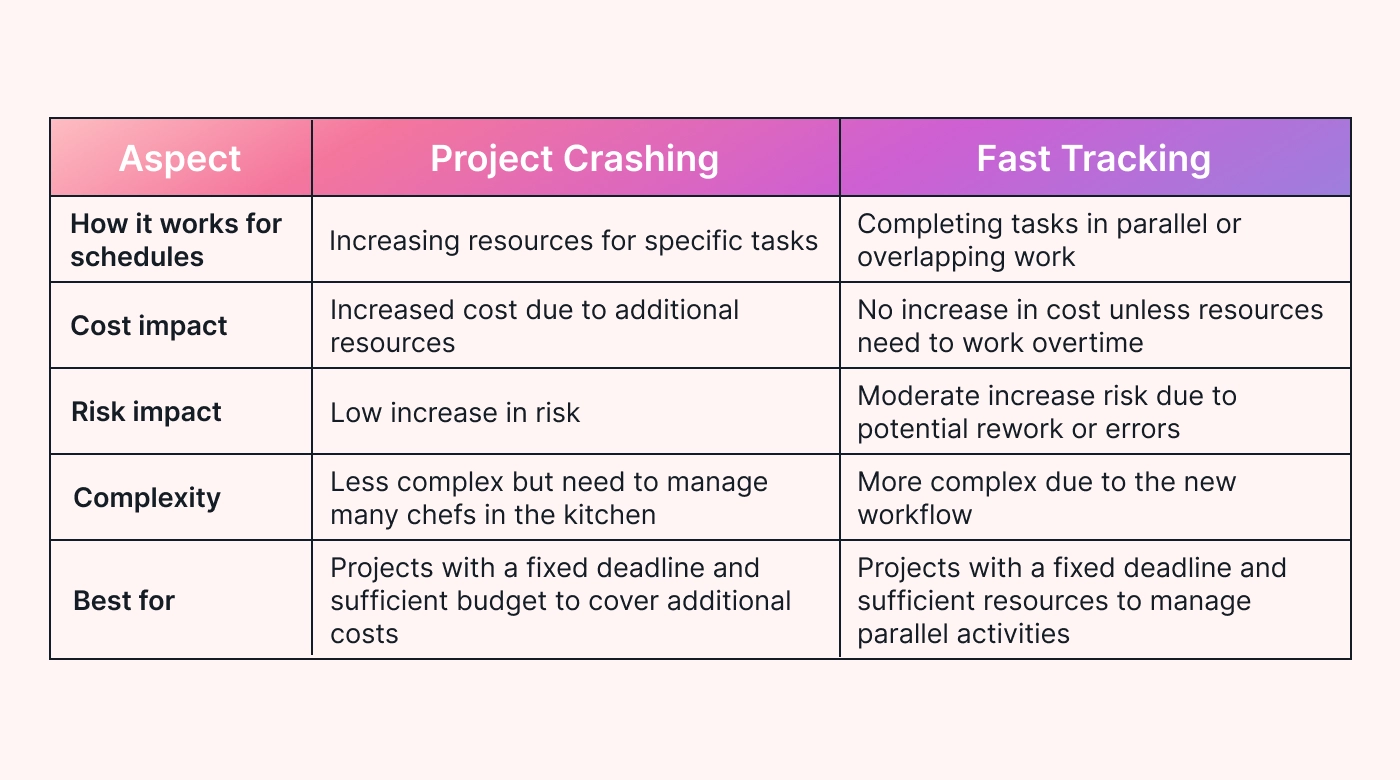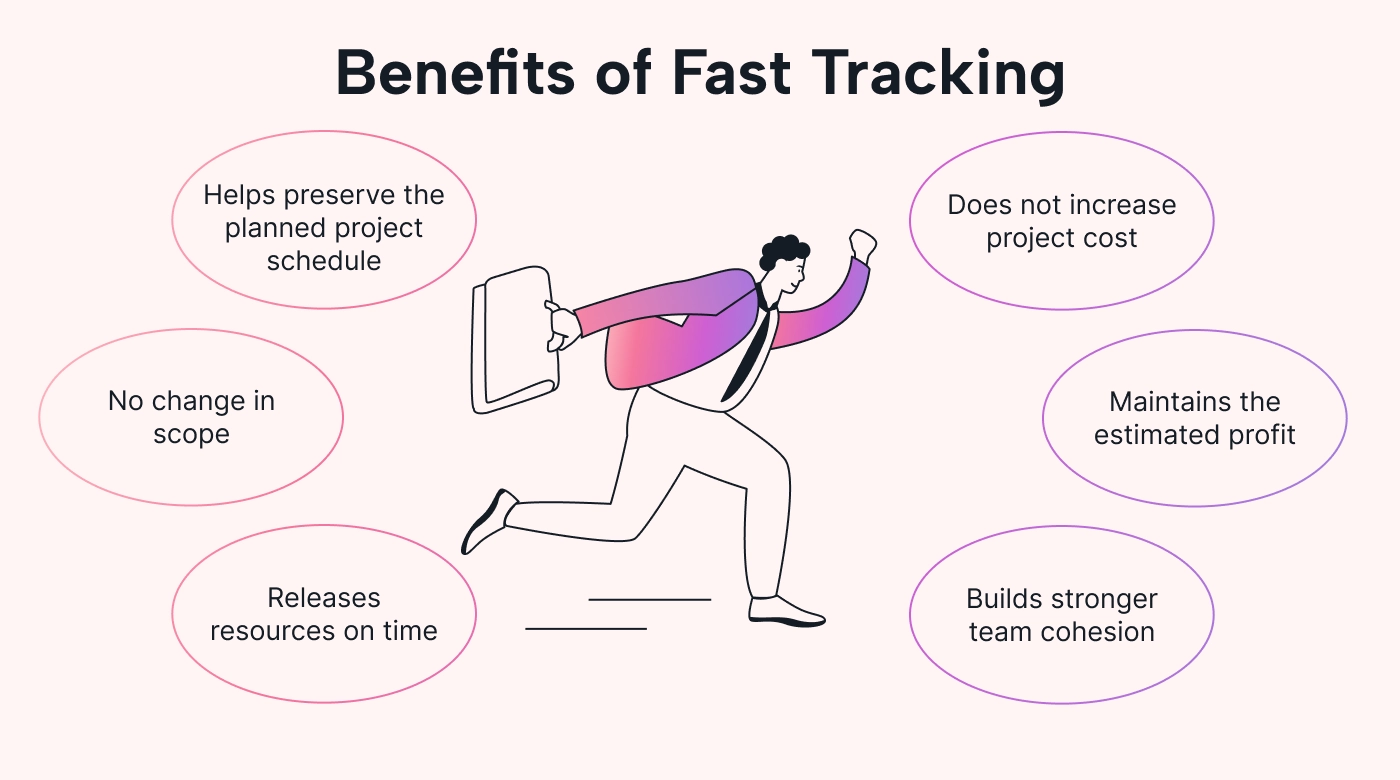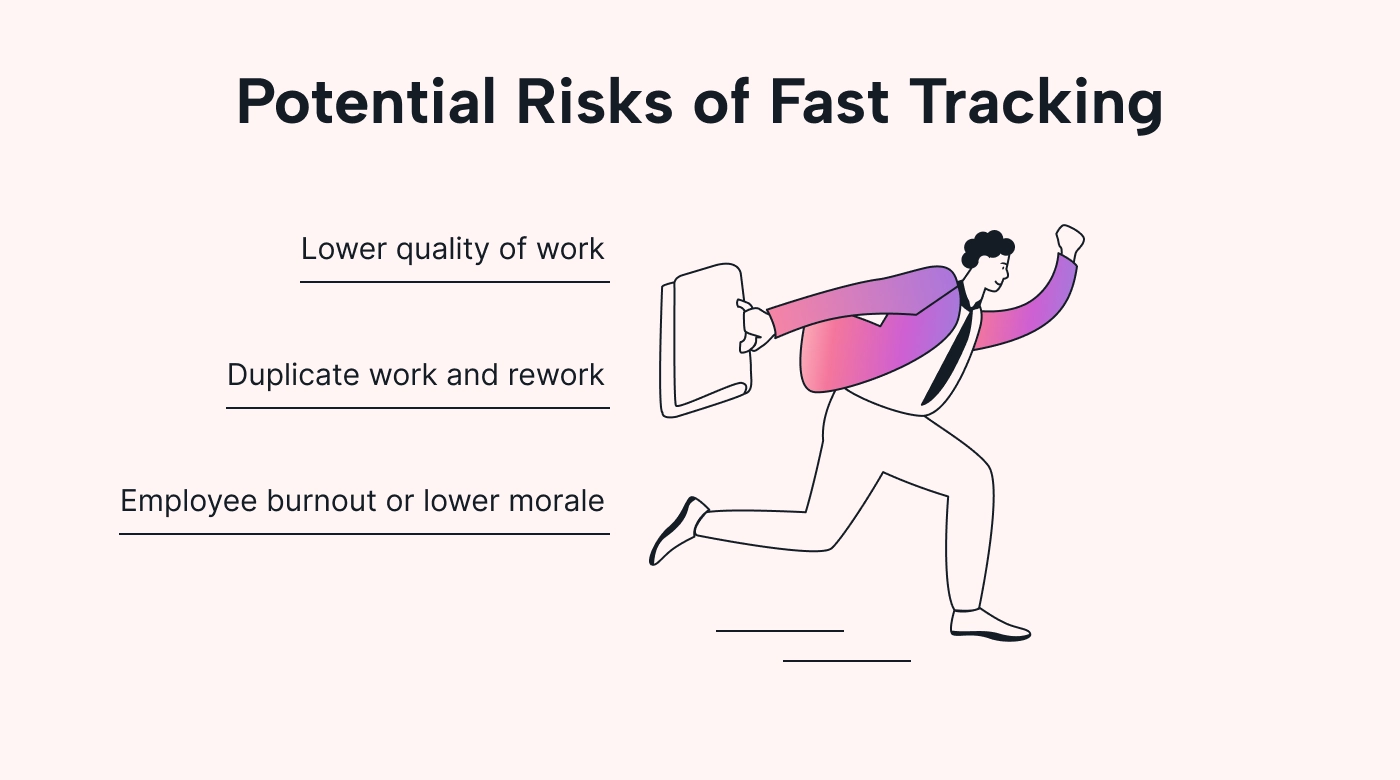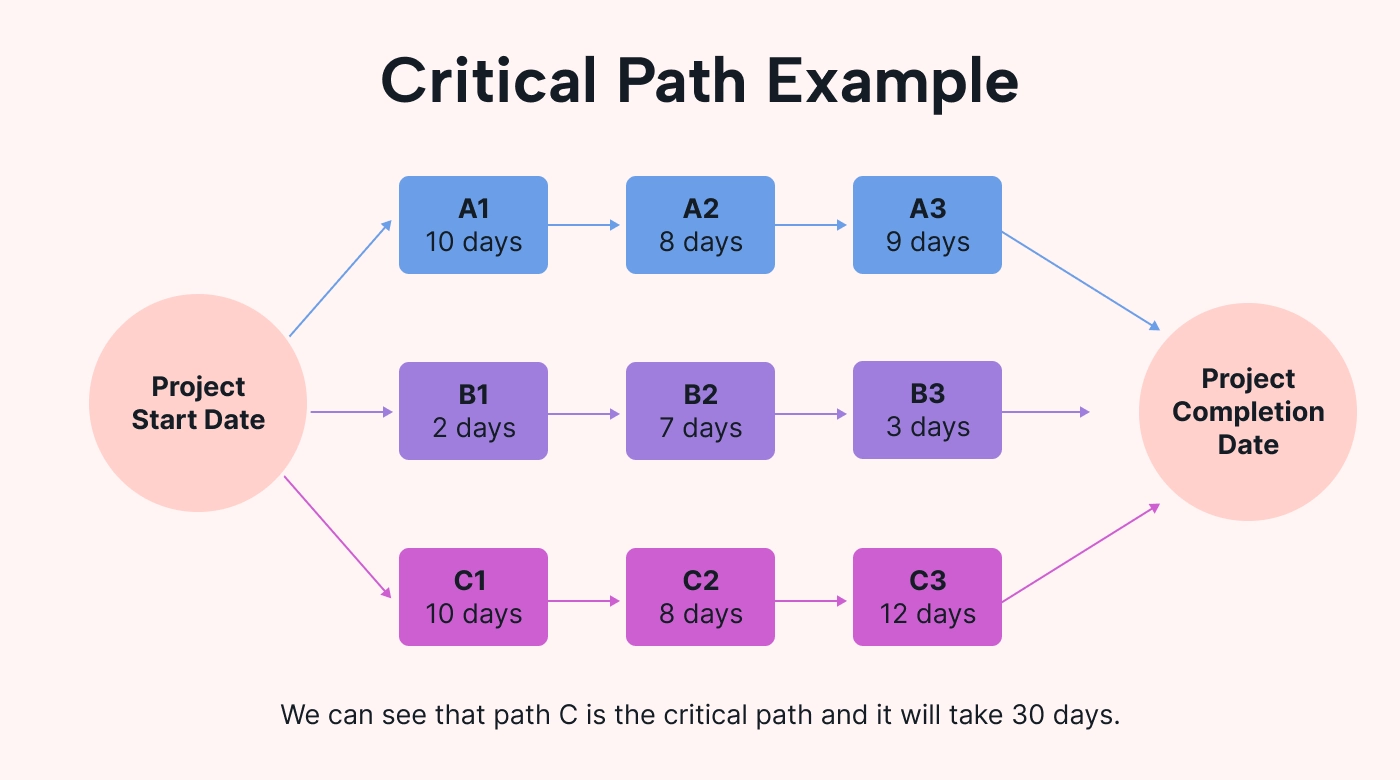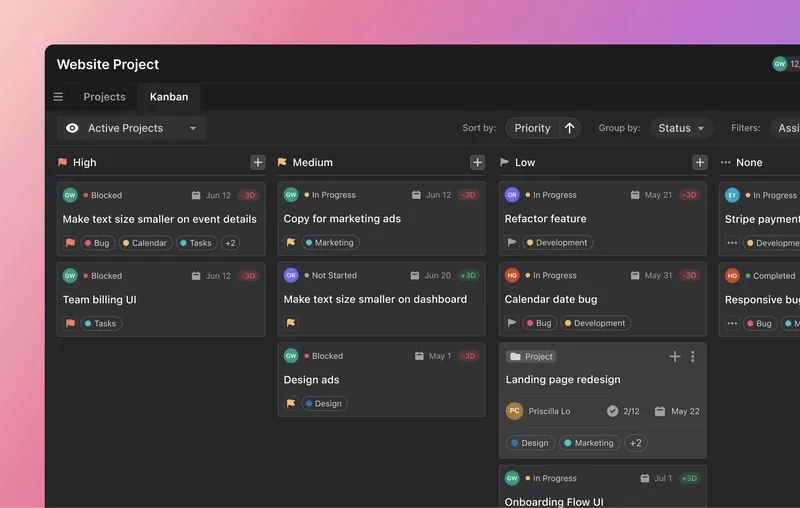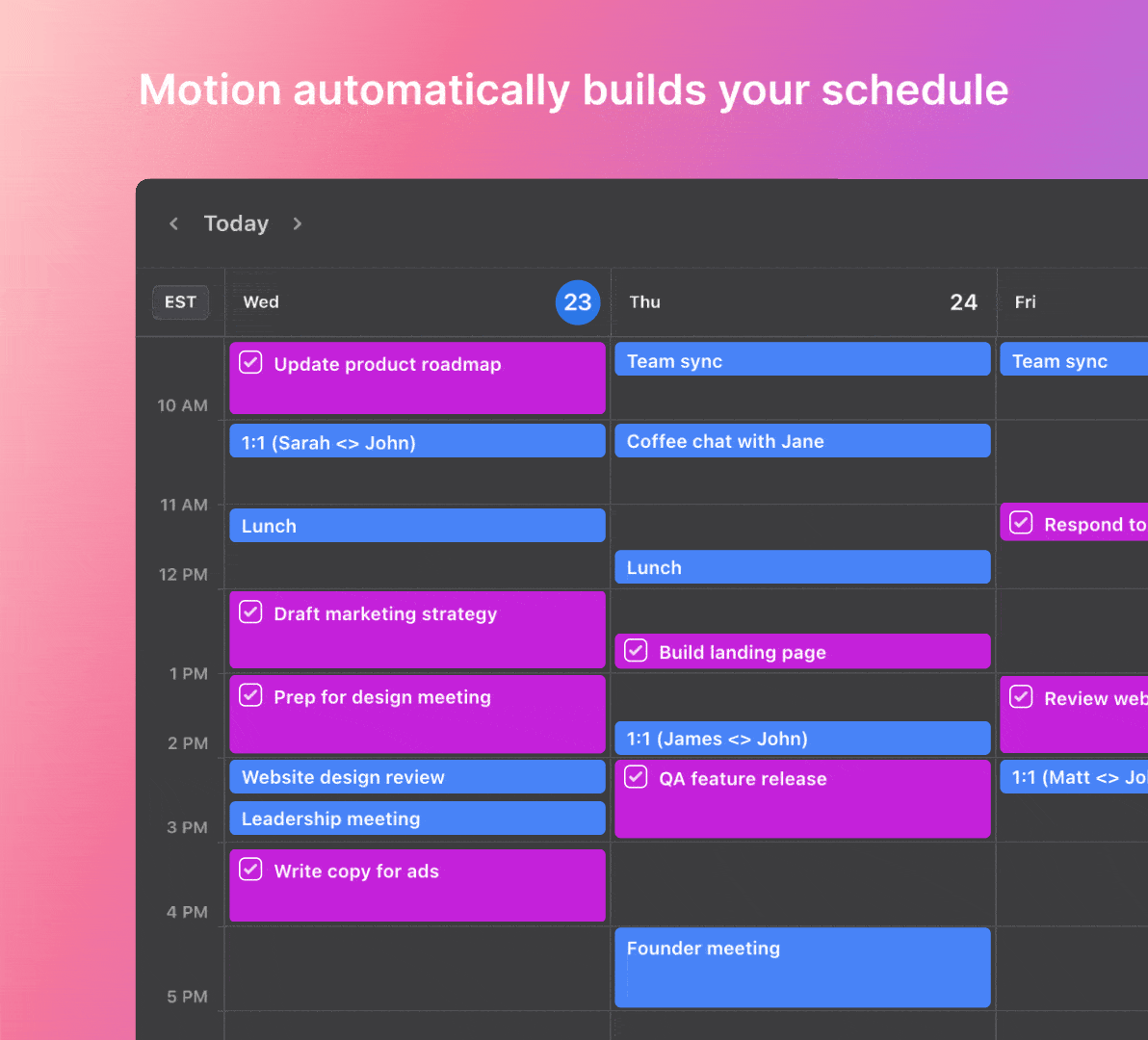It’s crunch time. You’ve got a project deadline looming, delays threatening to derail progress, and stakeholders breathing down your neck. What do you do?
Fast track that project to the finish line, that’s what.
When time is of the essence, and delays aren't an option, you need to kick your project into overdrive. By ruthlessly prioritizing critical tasks, streamlining processes, and removing roadblocks, you can accelerate your project timeline and still deliver an end product you’re proud of.
Sound impossible? Veteran project managers know that with laser focus, efficient execution, and a bit of hustle, the impossible becomes possible. Here are the keys to flooring it for the finish:
What is fast-tracking in project management?
Fast-tracking is a method of compressing a schedule to help you maintain or regain your planned schedule without altering its scope. Project tasks typically follow a sequential progression, but fast-tracking means you work on some critical tasks concurrently.
For example, in a blog writing project, the graphic designer typically has to wait for the writer to finish the draft before they can create the media. To fast-track this process, the writer can create an image brief during the blog planning stage so that the graphic designer can start working on it sooner.
A writer can't work on a blog without an article topic or keyword brief. Similarly, an editor can't edit until the article has been completed.
When fast-tracking a project, it's important to prioritize critical tasks from the critical path. The critical path refers to the sequence of essential tasks that the project needs to complete, and it's typically the longest path.
You fast-track only the tasks that lie on the critical path because only the changes made to the critical path affect the length of the project. Fast-tracking other work would only increase risks without shortening the project timeline. You do this by evaluating the dependencies and figuring out what can realistically be overlapped.
When should you fast-track?
The most common reason to fast-track is that you fell behind on your original schedule and want to get back on target.
But it can also help if you need to move up the target date. Usually, this comes from a client request or when you are trying to beat a competitor to market who’s moving faster than expected. In these situations, you can decrease the scope or use one of the schedule compression techniques (fast-tracking or crashing).
Project crashing vs. fast-tracking
Project crashing is a technique that involves using additional resources on project tasks so you can complete those tasks faster. Like fast-tracking, it helps preserve the desired timeline but does so at an additional cost.
Before fast-tracking or crashing happens, the project manager analyzes to determine which of the two techniques they should use to save the schedule.
If they select crashing, a cost and schedule tradeoff analysis is done to determine the most valuable critical path tasks based on the lowest crash cost per unit of time. A crash graph helps them visualize this.
If they pick fast-tracking, they’ll use a critical path chart to help them plan which tasks they can overlap or do simultaneously.
It'd be inaccurate to classify one of these two schedule retention methods as better. Instead, they're simply distinct and best for specific purposes.
Fast-tracking in Waterfall and Agile projects
Tasks often follow a cascading sequence in a sequential project management approach (aka waterfall). Fast-tracking in this method typically involves identifying activities you can overlap to shorten the overall project duration (or keep it on plan).
Agile methodologies are iterative, and teams work to complete increments of the deliverables throughout the project. Agile teams that use the Scrum framework decide on their tasks during a sprint planning meeting.
A sprint (which varies in duration) is a set of tasks the team works on to complete a project. There’s typically no set deadline for the entire project, as the backlog (a list of prioritized tasks for the project) is designed to change and may be re-prioritized frequently. Thus fast-tracking is usually not applicable for Agile projects.
If the project manager notices that the Agile team is falling behind, they can plan to make up time during the next sprint planning session. To do this, they can prioritize critical tasks, drop certain tasks, or shuffle resources.
What are the benefits of fast-tracking a project?
Pulling the fast-tracking trigger might seem scary, but using this to save your timeline has a few benefits.
Helps maintain project schedules or meet new mandates
Speeding up the completion of critical work for your project timelines can help you get back on track with — or meet newly mandated — deadlines.
No change in scope
There are alternative strategies that can help speed up project completion. However, they might require you to compromise on certain aspects of the project scope.
The fast-tracking approach is one of the few that can do it without compromising the project's scope.
Releases resources on time
Properly implementing fast-tracking means team members will finish their work on schedule (it may require overtime). It also means they'll be on time for other projects or tasks, and your entire portfolio won't be affected.
Does not increase project cost
As fast-tracking primarily entails rearranging the sequence and order of specific tasks within a project, it typically doesn't incur any extra costs or expenses.
Maintains the estimated profit
Accelerating the process and staying on target timewise means you won’t have to sacrifice profit to help you deliver on time (unless your team is hourly and works overtime).
Builds stronger team cohesion
While fast-tracking isn’t something you ever want to do on purpose, it can sometimes increase your team cohesion.
When working on multiple tasks simultaneously, cross-functional team members must collaborate closely to keep the project on track. Increased interaction can lead to better project results and, over time, strengthen teamwork.
Do not, however, try to use fast-tracking as a team-building tool. There are better ways (that don’t require risks) to help you do this, like transparency, positive work culture, and servant leadership.
What are the risks of fast-tracking a project?
Fast-tracking is a process that requires the project team to abandon their usual workflow and work on multiple tasks at once. Because of this, it carries potential risks.
Lower quality of work
Fast-tracking involves tight deadlines and might lead to fewer reviews and quality checks than a regular project. That, of course, can affect the overall quality of the deliverables. Project managers and workers may also overlook or miss certain items when managing multiple tasks simultaneously.
Duplicate work and rework
If multiple tasks are worked on simultaneously, certain results might have to be revised or modified before the project is complete.
For example, the designers in the scenario we mentioned may need to redo a few of their designs to accommodate the finalized write-up.
Employee burnout or lower morale
Relying too much on fast-tracking can cause employees to feel overburdened and stressed. They’re expected to complete more tasks in less time, which increases pressure due to compressed schedules. As a result, productivity may decrease, employee morale may suffer, and burnout may occur.
Fast-track a project in 4 steps
If you’ve done the analysis and realize it’s time to fast-track a project, follow these four steps to get the best results.
1. Map your team's strengths and weaknesses
Having a capable and tight-knit team you know and trust is always important, but even more so when the project’s success hinges on their ability to perform under stress and communicate effectively.
Take some time to map out your team's strengths and weaknesses using a matrix or simple document. Knowing each team member’s strengths and weaknesses will help you delegate and assign tasks properly, keep the team productive, and minimize errors. (Actually, this should happen on any project, with or without fast-tracking).
2. Examine the critical path and plan what to fast-track
Next up, you’ll need to pull out the critical path chart you made while planning the project schedule. You’ll use it as a guide to help you see what tasks you should focus on.
Working with your team leads during this step is a good idea, as they can give the most reliable information on which activities to overlap and which to avoid.
You also need to consider the risk that changing the timeframes for these tasks will have. Plan for any obvious risks like lower quality work by adding in a few extra reviews.
3. Update the schedule and your stakeholders
Once you have chosen the most suitable course of action, it’s time to inform your team and all the vital project stakeholders. They’ll probably appreciate you telling them about the reasons for this approach since no one ever enjoys fast-tracking.
Remember to keep your schedule updated! Adjusting your team’s concurrent task schedules and resource assignments may seem like a burden, but it’s essential. However, using task management software lets you quickly and easily modify your team’s schedules.
4. Track progress (very closely)
Finally, make sure you closely monitor the fast-tracking process. Use effective monitoring and control systems to track progress, identify issues early on, and quickly address them.
One of the most efficient methods for keeping track of a project is by using digital project management tools. These tools provide a comprehensive view of the project, making spotting any issues or obstacles easier. Additionally, the entire team can access all project details, minimizing the risk of overlooking crucial information.
Project management software also helps to manage or avoid any risks. You could use it to help you schedule those extra reviews we mentioned earlier.
Top tips for fast-tracking project management
Take fast-tracking to the next level with these four tips.
Prepare to fast-track sooner rather than later
In most cases, you’ll probably be in a rush if you fast-track at the last minute. Instead, you should anticipate the need for fast-tracking as soon as you recognize any foreseeable delays. This way, you can seek possibilities for concurrent work and collaboration among team members to avoid unnecessary handoffs.
Pay attention to detail on the critical work
To avoid more delays or lower-quality deliverables, paying extra attention to the critical tasks you’re fast-tracking is best. It might help to have more experienced team members, offer extra help or supervision, or have specific quality checks for these critical tasks.
Remove dependencies as much as possible
When creating a plan, aim to have as few dependencies as possible. If there are non-negotiable dependencies, factor them into the critical path.
Working in an Agile environment has some advantage here, or at least not the pressure of a fixed deadline. Teams can quickly adapt to changes in project scope.
For waterfall, by designing parts of deliverables to be self-sufficient from the start, you can reduce dependencies. Of course, that lets you assign tasks in parallel, rather than sequentially.
Use project management tools to help you fast-track
Simplify the process with project management tools. Many tools have different views like task lists, Kanban boards, or a calendar to help show team members what to work on next.
AI task managers like Motion can help you fast-track projects in many ways:
- It knows everyone’s schedule and what they are busy working on, so when you shuffle tasks around, it can quickly update everyone’s schedules.
- Another useful feature of Motion is that it lets you add task blockers, or dependencies. If you have any set of tasks that must be done in a certain sequence, you can assign dependencies. If you are busy rearranging tasks, it’ll keep that in mind and arrange them in the correct order. This means you can avoid overlapping the wrong tasks and get a more accurate estimate of completion time.
- You can use the Kanban board view to easily adjust tasks within a project. If you update dependencies, deadlines, or priorities, Motion’s AI will rearrange your team’s schedules to serve up the most effective calendars. It will tell you if it can’t meet a deadline. It will not move events, like meetings, but it will rearrange your task work to optimize everyone’s calendars.
Use fast-tracking project management wisely
Fast-tracking is a valuable strategy for speeding up a project’s timeline when it’s running behind schedule and changing the scope isn’t an option.
However, it’s important to proceed with caution before compressing the schedule. Take time to evaluate your allocation of resources, assumptions, and risk management strategies. It’s also wise to consult with your project team and stakeholders before making final decisions.
Using a project management tool like Motion can help you effectively manage the fast-tracking of a project. Motion won’t overload your resources when fast-tracking, as it knows their availability. Use it to lighten the load and help steer the ship, and you’ll have a better chance at success.
Sign up for your 7-day free trial.

Hailing from South Africa, Richard Reynolds is a seasoned project & product management writer at large (last sighted in Vietnam!) With 5+ years experience in the field, a BA in Psychology, and education in Biz Mgmt & Professional Project Management, Richard remains passionate about simplifying complex project concepts with seasoned professionals and newbies alike.

